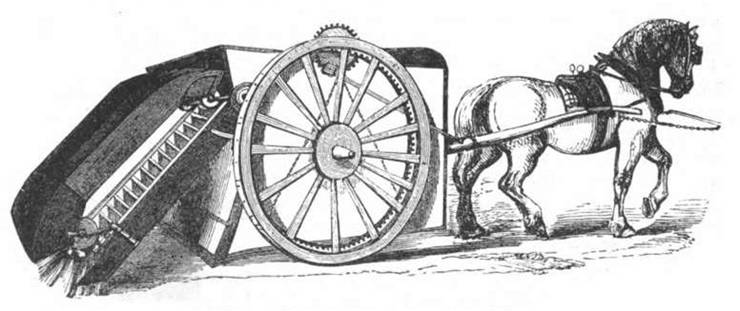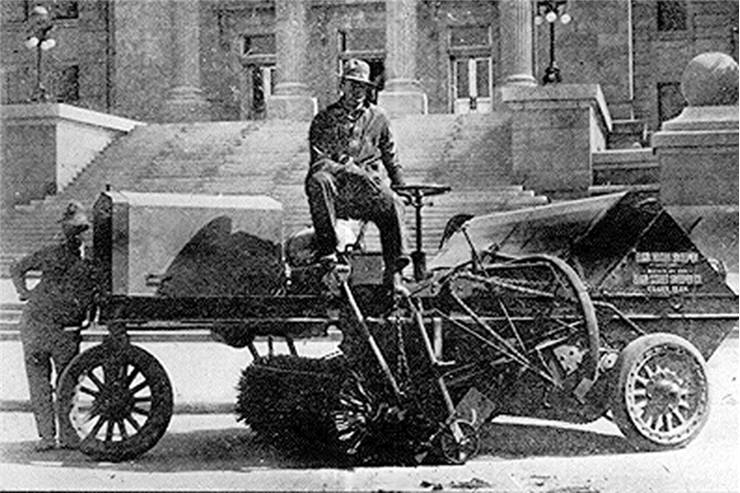Invention and History of Street Sweeper
Street sweeper is a machine for cleaning streets in urban areas. First ones appeared pretty early - in the 19th century. Today, many big cities use them while other still use human street sweepers.
With the Industrial Revolution, in 1840s, Manchester, England, had become known as one of the most developed industrial cities. It was a home of one of the largest textile industries in the world of that time and had the first passenger rail service. But this progress also made it one of the unhealthiest places to live because of the amounts of trash that collected on the streets. To solve the problem Joseph Whitworth invented the first street cleaner in 1843 and called it "The Patent Street Sweeping Machine of Manchester". In the United States the first street sweeping machine was invented and patented in 1849 by C.S. Bishop. These two sweepers were horse-drawn. In 1911, John M. Murphy invented motor driven pickup street sweeper but only on paper. He managed to convince The American Tower and Tank Company from Elgin, Illinois that the idea could work and they, together, founded Elgin Sweeper Company. They experimented 2 years and in 1913 the City of Boise, Idaho, bought their first Elgin Sweeper. John M. Murphy continued to improve the sweeper and, in 1917, he patented the next version with a conveyor belt to carry dirt from the broom to the dirt box instead of a slat conveyor that was in the original.
General ides of trash removal with the street sweepers remained the same until the 1970s and didn’t change until the end of 1990s! Street sweepers removed only larger trash and left the smaller because idea was that the rain will clear it. But smaller trash that rain clears becomes stormwater pollutant and later taints the waters. Because of that standards are changed and today some street sweepers are PM10 certified which means that they can clean litter that is smaller than 10μm. These particles can affect our health because they are so small that they can reach the lower regions of our lungs and because of that, sweepers should be able to remove them. These sweepers are equipped with water tanks and sprayers which loosen particles and reduce dust. Brooms clean these and move them under the sweeper. There are met with vacuum which places them into a collection bin or a hopper. A regenerative air street sweeper cleans with forced air which creates a swirling effect which loosens the debris. When loosened, negative pressure sucks the debris and places it inside a hopper. Despite these standards and advancements in technology, 90 percent of all street sweepers used in the United States today are mechanical broom type with spinning brushes.
Sweepers can have different sizes. They can be full trucks or portable machines that are towed behind some other vehicle. Bigger ones can be even used on the highways while the smaller can be used in warehouses or runways. Besides standard cleaning, some street sweepers can clean potentially harmful substances if they are equipped for such a task.
Street sweepers are also used in Asia of less sophisticated mechanical and regenerative air type with different design compared to American and European sweepers. China and Taiwan use mechanical sweeper design that uses two main brooms mounted vertically at the back of the hopper which carry debris into hopper. This method is much less complicated and more cost effective than the mechanical belt and broom setup.
Street sweepers keep fish and wildlife from heavy metals and other pollutants, improve water quality, keep drains clean and reduce chances of flooding.

